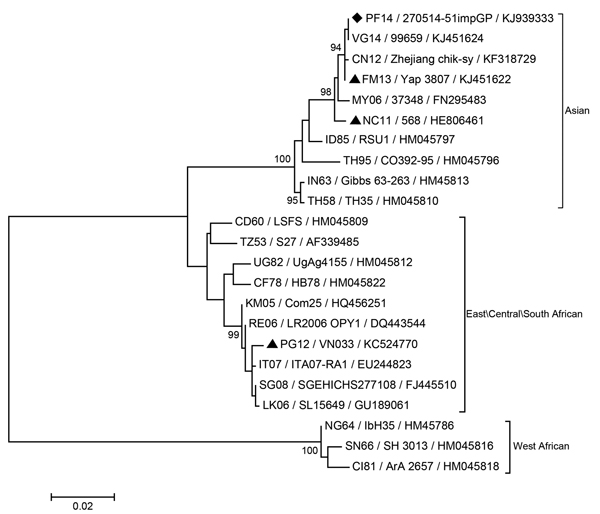Volume 20, Number 10—October 2014
Letter
Chikungunya Virus Imported into French Polynesia, 2014
Figure

Figure. Phylogenetic analysis of the chikungunya virus strain isolated from a patient in French Polynesia, May 2014. The evolutionary history was inferred by using the maximum-likelihood method based on the Kimura 2-parameter model. The percentage of trees in which the associated taxa clustered together is shown for values >90 next to the branches (1,000 replicates). Evolutionary analyses were conducted by using MEGA software, version 6 (http://www.megasoftware.net). Each strain is labeled by country (International Organization for Standardization 2-letter country codes, http://www.iso.org/iso/home/standards/country_codes.htm) and date of origin /strain name/GenBank accession number. Black diamond indicates the chikungunya virus strain from French Polynesia; black triangles indicate strains from other Pacific islands. Scale bar indicates number of substitutions per site.